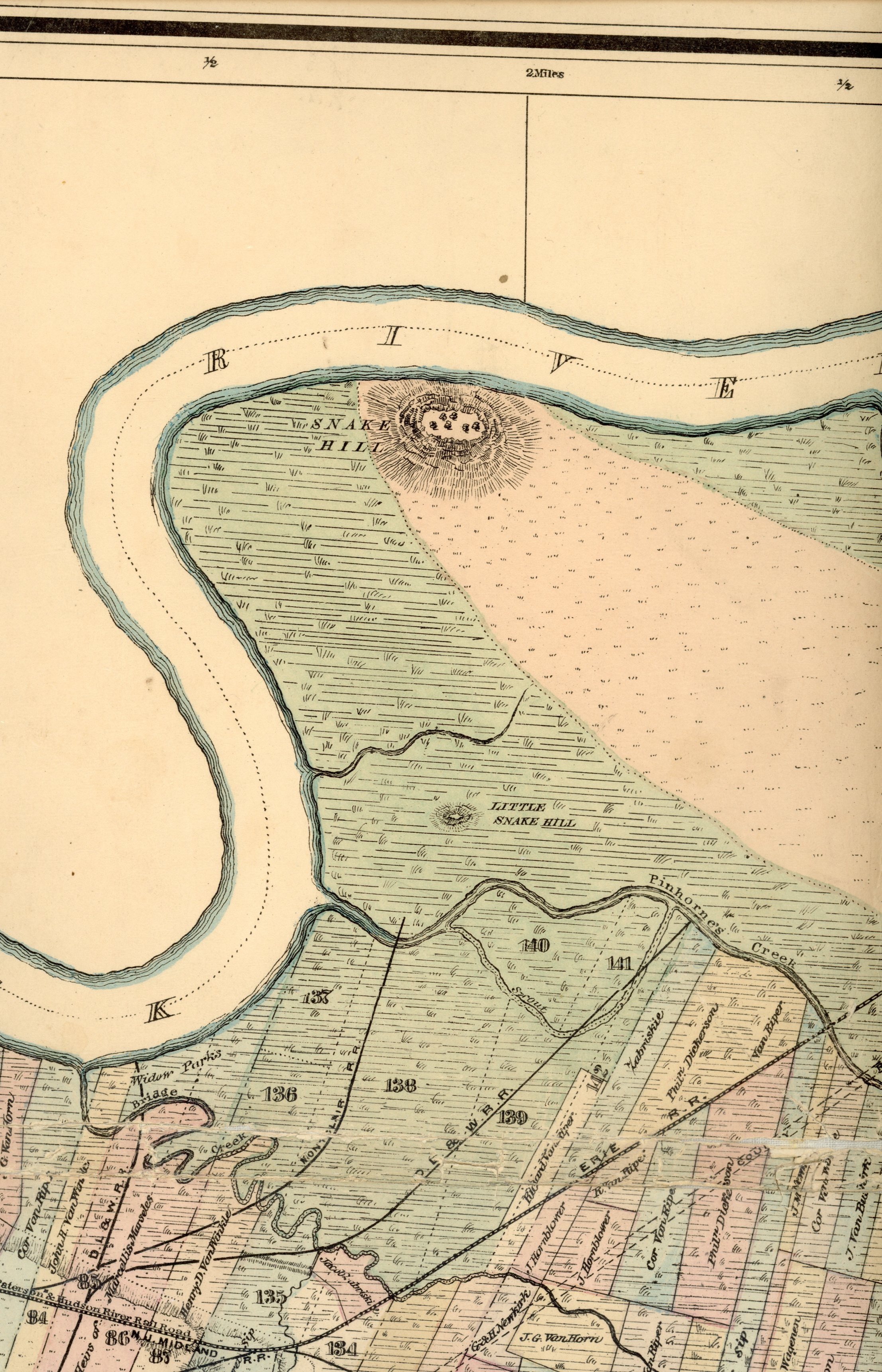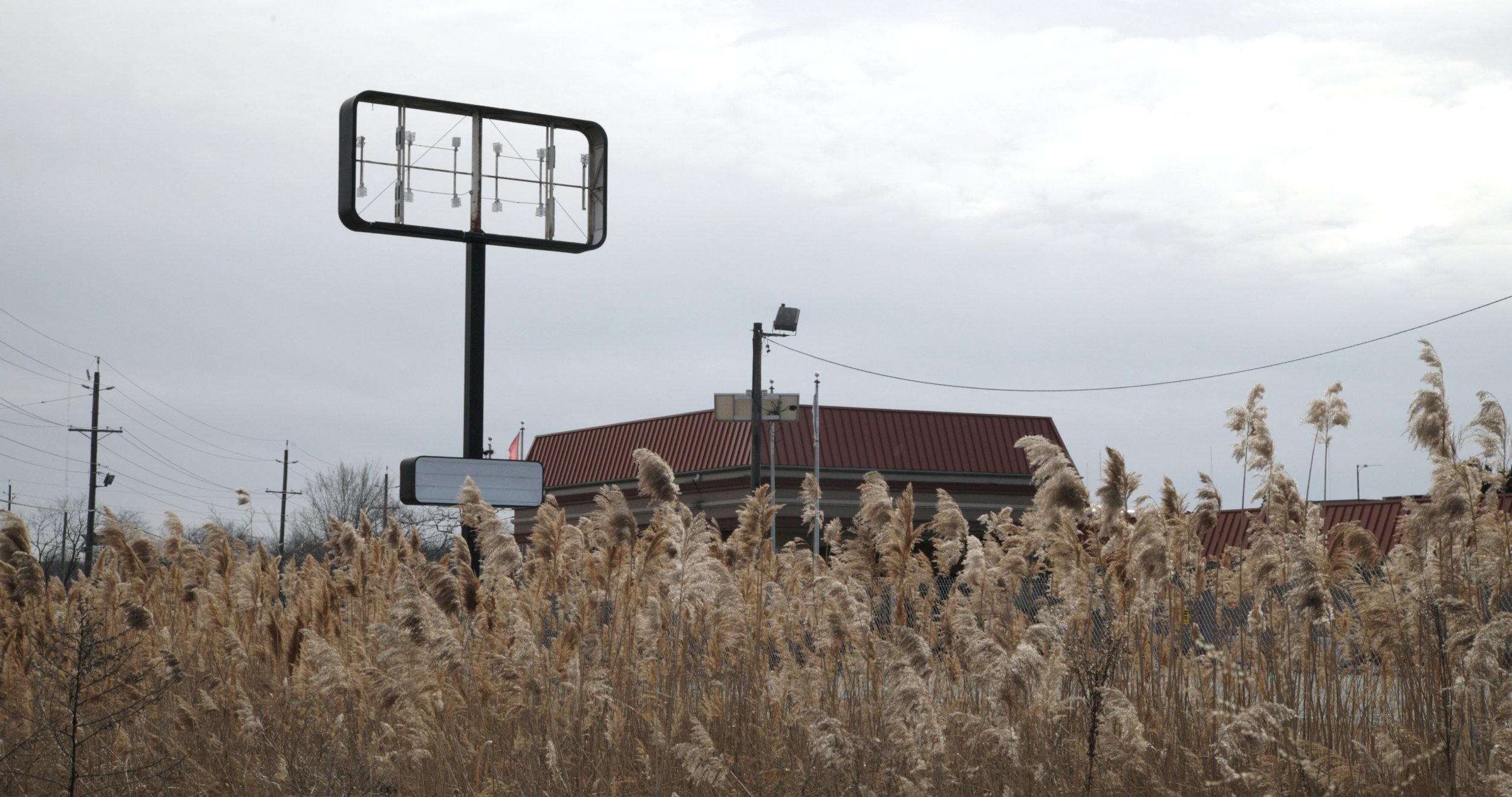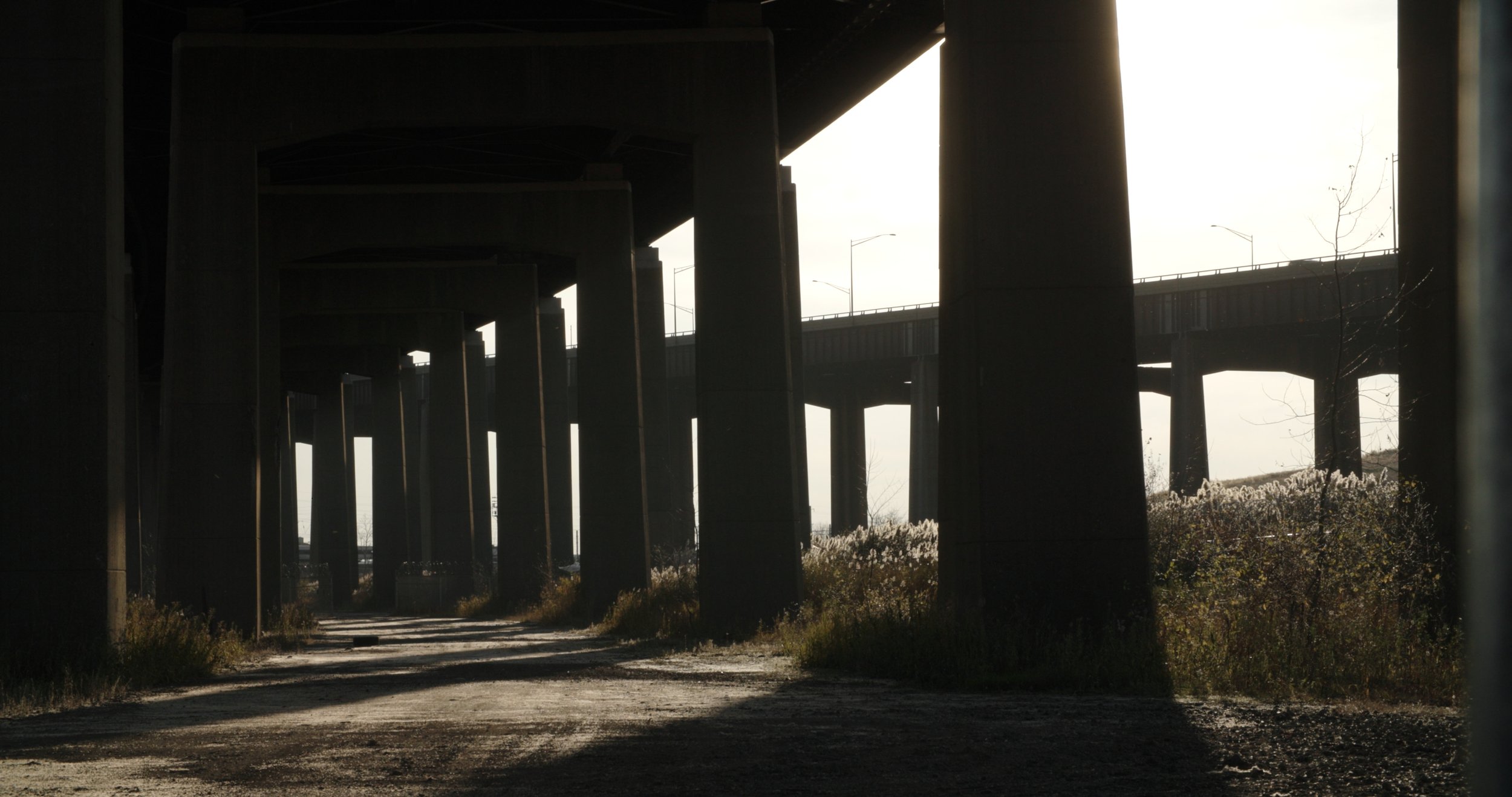
Crypt Words
An essay film about the New Jersey Meadowlands, poetry, and the largest exhumation in US history.

“The longer we look through a camera or watch a projected image the remoter the world becomes, yet we begin to understand that remoteness more.”
Robert Smithson
PLACE, NARRATIVE, & AESTHETICS
-
Crypt Words has as its center a place—Snake Hill, a 200-million-year-old volcanic neck rising from the New Jersey Meadowlands. Through the 18th century, Snake Hill overlooked a vast swamp—land so resistant to passage and “productive” use that, despite being just miles from Manhattan, it sheltered pirates and self-emancipated enslaved people. Later, as landfills and industry engulfed it, it was home to an institutional complex, comprising a prison, asylum, contagious hospital, and other facilities housing the region’s “undesirables.” It was also the site of a potter’s field. In 2003, 4,000 of the 10,000 people buried there were disinterred to accommodate a new highway ramp—the rest remain in unmarked graves. Since then, the site has been redeveloped as a park and housing complex.
-
In exploring this history, Crypt Words asks: how can a place be a form? How can we listen to what a place tells us–in a time when it is profoundly important that we learn to listen to the non-human world?
The film answers these questions through formal and aesthetic experiments founded in the social, environmental, and artistic history of the site. The place itself is the source of how the film looks, feels, and sounds.
We use a narrative structure developed out of the concept of ductus, which refers to the way a work of art leads a reader or viewer through itself, using the linked metaphors of mapping and journeying. The idea here is to create a serpentine ‘route’ for our film with many branches, viewpoints, and switchbacks, rather than pursuing closure or a totalizing, authoritative perspective. So, as we travel through the film, we approach and reframe aspects of the site’s history–often retracing our steps to look at things more than once, or in more than one way.
-
Pastoral painters, William Carlos Williams, Robert Smithson and Nancy Holt all made work at and around Snake Hill. The film explores this history–reworking and sometimes re-enacting it. For example, we open with a re-staging of Holt and Smithson’s film SWAMP, which serves as a cinematic corollary for ductus, our narrative structure.
As in SWAMP, the narration in “Crypt Words” stages a dialogue between two speakers. This device allows each voice to interject on the other and to reinterpret sequences, turning ideas over in various documentary and poetic registers and reflecting them back differently, rejecting final authority and inviting contradiction and multivalence. We bring in other interlocutors, too, to add more dimension to the central dialogue. These include poets Susan Howe and Craig Dworkin, among others.
Crucially, Crypt Words explores the mechanics of power and examines the material constitution of systems of economic and social control. We analyze the history of power at Snake Hill within the landscape we encounter today–from European theft of land belonging to the Lenape people, to the consolidation, there, of vast institutions that imprisoned thousands of people, most of them poor, many of them deemed by society to be ‘insane,’ to the Meadowlands’ use as a dumping ground for byproducts of capitalist expansion.

INTERVIEWS
This film features interviews with a range of artists, poets, writers, and filmmakers. We chose a distinctive visual style that would unify these segments: a full profile shot of the speaker. This indicates to the viewer that these interviews are not to be seen, heard, or understood as a typical “talking head.” A profile shot, sometimes with eyes obscured, creates a sense of distance, a lack of intimacy with the speaker. The viewer’s gaze never meets the speaker’s. Viewer and speaker remain oriented on two different spatial planes, briefly intersecting, but traveling in different directions.
This subverts a common, one might even say ideological, practice of situating the interviewee so that their gaze either meets or almost meets the camera lens and, by extension, the viewer’s gaze. Our interview style instead reminds viewers that the screen constitutes distance—a distance that that is, in the end, insurmountable. We challenge the “lie of intimacy” implied by formal devices that seem to bring viewer and subject into close commune, by which films excuse themselves from confronting the real distance between who is on-screen and who is not. In styling our interviews this way, we resist the notion that the documentary can offfer true intimacy or knowledge of a person and their interiority.
INTERVIEW REFERENCES
Of course, we are not the first filmmakers to record a speaker in profile, nor are we the first to have wanted to create, sustain, and call attention to the distance between what’s on screen and what’s off. Other other artists have used a full profile shot for exactly the reasons outlined above. We take particular inspiration from Jean-Luc Godard’s film 2 or 3 Things I Know about Her (top) and Jean-Marie Straub and Danièle Huillets film Fortini/Cani (bottom).
This puts us in a tradition of challenging experimental film, but we are not simply mimicking these earlier works. By making these profile shots a central element of the project, we are turning a formal element into a structural component of the film’s politics. By refusing dominant interview styles, our film stands at odds with contemporary documentary’s other forms of ideological domination too. As Franco Fortini explains, “one should try to form in a literary or poetic work a stylistic structure which in its internal tensions is the metaphor for the tensions and tendential structure of a human social body which through a revolutionary path moves towards its own form.”




You could say that “Hollywood” was invented in New Jersey. Celluloid itself was first mass produced in Newark and before the early film studios decamped to California, American film production was centered around Fort Lee. As a result, many early silent films were shot in New Jersey, with local forests, rivers, and swamps standing in for foreign locales. Indeed, the Meadowlands is ringed by landmarks of early film production. As we explore the history of the Meadowlands, we will incorporate this background and its formal and visual implications.
We are particularly concerned with the “surveyor’s space” of linear perspective, which often determined how early filmmakers constructed the frame, so much so that a surveyor’s theodolite was included in films like A Question of Seconds (top, center).
Subverting linear perspective was an essential component of the work of Nancy Holt and Robert Smithson. Their collaborative work SWAMP (top, left) was recorded close to Snake Hill; formally, it fractures the relay between subject, viewer, filmmaker, and film. We re-enact
SWAMP in Crypt Words, and explore its relation to “surveyor’s space.” Holt’s later work Pine Barrens (top, right) tackles the problem of binocular vision—revealing that although we see the world as a unified single image, sight is actually composed of many fragments that are “rendered” one in our mind. Holt’s experiments in monocular filmmaking inform Crypt Words.
ARCHIVAL: MOVING IMAGES
As part of our research, we’ve located and digitized hundreds of previously undigitized photos from the Snake Hill institutional complex, taken around 1915 by the photographer William H. Richardson. These images offer the means for a visual exploration of the site that wasn’t previously possible and they capture parts of the grounds that are poorly documented in official publications, namely, the potter’s field (far left) and the Asylum, (second from left).
These photos sustain a strong correspondence with Nancy Holt’s photographic work, especially her series of photographs of western cemeteries (far right) and, of course, her documentation of her trips with Robert Smithson (second from right) to the “blasted landscapes” of New Jersey, including to Snake Hill.
Crypt Words incorporates still sequences from both sets of images.
ARCHIVAL: STILL IMAGES
We also expand our archival selection beyond 20th century photographs and bring the tradition of Western painting to bear on our research.
Smithson scholars often describe this tradition as one that he was trying to shake, but rather than disavow it, we want to put it to use. We look at medieval works like The Blessed Ranieri Frees the Poor from a Prison in Florence, by Sassetta (top), to consider how the imprisoned poor have been depicted—and contribute to their own liberation.
We look at Breughel, whose Blind Leading the Blind (bottom) can be read as an interlocutor with Holt and Smithson’s SWAMP, as the blind men depicted march into a marshy transition zone between land and water.
Finally, we also consider how Snake Hill itself was depicted by 19th century pastoral paintings like in Charles Parsons’ Snake Hill on the Jersey Meadows (middle)—a far cry from the ruins that Holt and Smithson encountered in the late 1960s.
ART HISTORICAL IMAGES





























